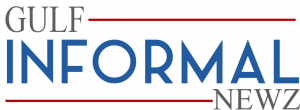If all this adds up to ensuring a business thrives, it’s worth losing a few privileges
These days, with job losses mounting, losing a few privileges does seem a small price to pay. More so, if it ensures that business survives.
I feel the need to address a misunderstanding that appears to be gaining traction by the day.
To be precise, I want to talk about a misnomer surrounding the concept of monitoring – the ominous M word that has begun to instil fear in employees far and wide. As with many a disruptive technology or pioneering invention, the proliferation of worker and workplace monitoring has divided opinion.
In fact, I dare say that the balance of opinion weighs against it. People are sceptical and afraid about what it means for employee privacy, for morale… and for the future.
But these views miss a crucial point. What many people fail to understand is that monitoring is not about individual employees, it’s about leaders.
Forget the knowledge worker, right now, it’s the knowledge leader that counts. At its core, tech-driven monitoring is about equipping managers and decision-makers with the depth of insight they need – but don’t yet have – to help their workers and their companies to be as productive and successful as they can be.
Let’s face it – the need for strong leadership has never been greater than it is today. As we struggle with the economic fallout of a pandemic and the unstoppable migration from office work to remote, it is leadership that will distinguish those who simply survive from those who go on to thrive.
Set the marker for future
For companies that want to find themselves on the right side of history when all this is over, it is vital that their leaders arm themselves with the insight, knowledge and tools that will help them drive productivity. And central to that is monitoring.
Here, the age-old adage ‘knowledge is power’ rings true. The premise is simple: the more you know, the greater your capacity to effect positive change.
Employee surveillance, monitoring, tracking – call it what you will, if it helps organizations to move forward, not back, then the pros surely outweigh the cons.
Less of a talking point
In any case, the debate comes too late. Remote working is here to stay, and so too are the growing number of tools designed to help companies monitor the what, when, where and how of employee activity. Like it or not, employee monitoring will be an integral part of the new normal that is evolving before our eyes.
Soon, it will cease to be an issue.
If the inevitability of the whole thing seems a little depressing, then you might just be looking at the issue through the wrong lens. Workplace monitoring is not a zero-sum game; it is not company versus employee or them against us. If done correctly, it benefits everyone.
Everyone wins
You don’t have to pick a side. I believe in workplace monitoring to help companies grow. I also believe in people.
I like employees, I want them to be happy and to excel at what they do. I want them to experience the satisfaction of each win – individual and collective – on the journey to self-improvement and development.
At enaible, we are making that happen with machine learning software. By monitoring employee activity and turning data to actionable insight, our productivity score lets individual employees as well as their managers know how productive they are, and more importantly, where improvements can be made.
Critics paint a picture that likens intelligent monitoring to a stern-faced manager who stands over the shoulder of employees, noting their every move on a clipboard. I see it differently.
To me – as I have said before – monitoring is akin to a dedicated sports coach who spends countless hours observing his team. It is the trainer who tirelessly encourages his athletes and pushes them to strive for greatness.
There is no ulterior motive. He wants the best for the team – he has the players’ backs.
It’s time to overcome the fear of workplace monitoring. In this new world of ours, where employees operate from home and virus-induced recession threatens jobs, understanding how people work is vital to keeping people in work.




